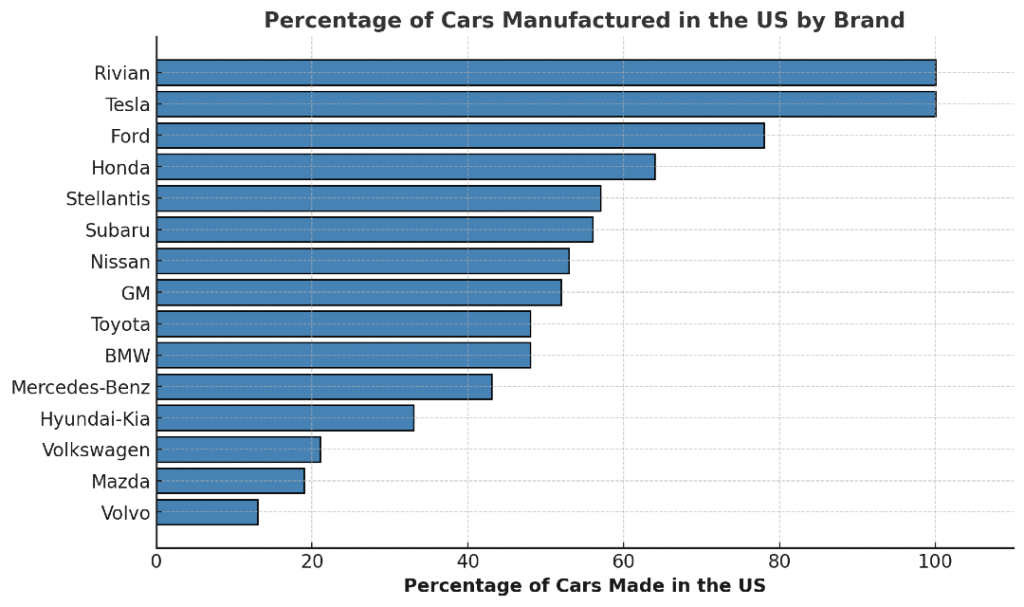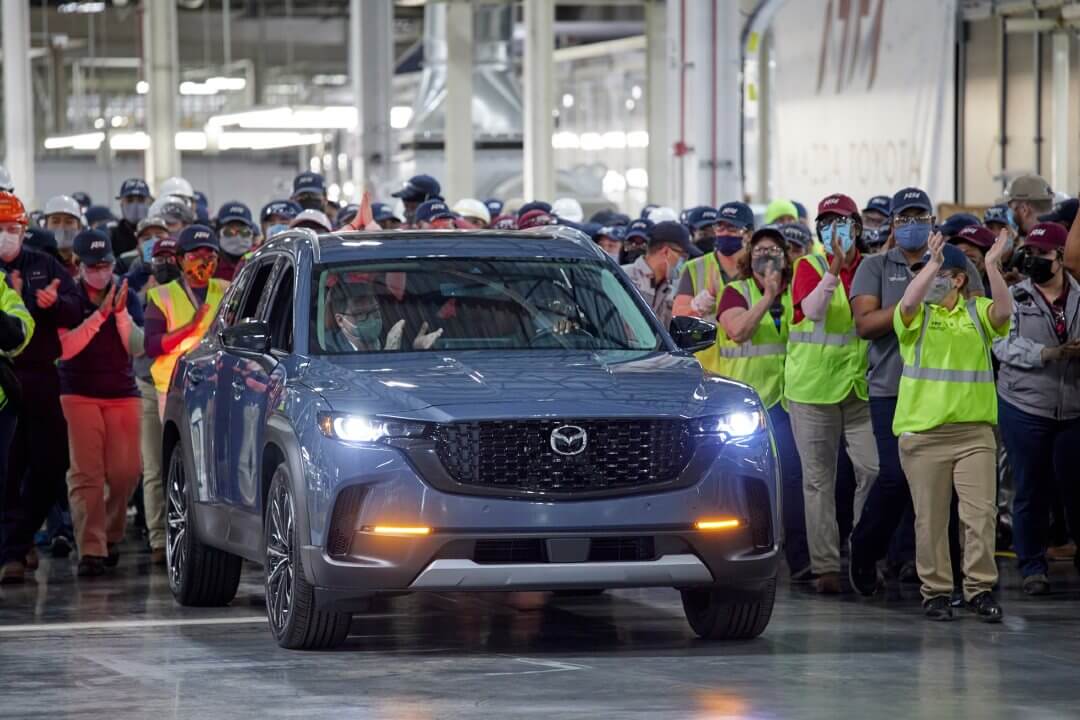Mazda Tariffs: Automaker Among Hardest Hit On Imported Cars

Mazda is off to a stellar start to 2025, coming off a record sales year for 2024 and hitting a new monthly sales record. Still, for Mazda, tariffs are likely to loom large throughout 2025 and beyond if the 25% US tariffs on imported vehicles indeed become permanent.
Key Points
- Mazda manufactures about 19% of its cars for the United States market within the US.
- That figure places Mazda toward the bottom of the list of carmakers with US content and production.
- Mazda hit a new monthly sales record for March 2025, the month before the 25% tariffs took effect.
- The automaker currently only has one model’s lineup built in the US.
Most of Mazda’s models sold in the States are imported from Japan, followed by Mexico and the US. Only the Mazda CX-50 and CX-50 Hybrid models are currently manufactured in the United States, at Mazda Toyota Manufacturing (MTM), the carmaker’s production facility partnership with Toyota in Huntsville, Alabama.
How Will Mazda Minimize the Effects of Tariffs On Its Business?
The United States is Mazda’s largest market by far. In 2024, Mazda North America achieved a full-year sales record of 424,382 vehicles in the US, topping all of Europe (at 175,665 units) and the automaker’s home market of Japan (141,946 cars) by a wide margin. So, the 25% tariffs in its biggest market will have an outsized effect on its global profitability, at least in the short term.
Mazda North American Operations (MNAO) CEO Tom Donnelly said the company can make moves to reduce the damage to its US profits, but that it cannot fully absorb the weight of the tariffs alone:
“We have a supply chain that allows us to consider those things, but these are decisions that take months to potentially a year time frame in terms of the adjustments you make from a pricing perspective,” Donnelly said.
While Mazda could increase output in Alabama, producing more CX-50 and CX-50 Hybrid models there, and decrease output in Mexico, this can’t happen overnight.
The CX-50 and hybrid variant are second or third in sales volume within the lineup. The joint gas and hybrid CX-50 models are expected to overtake the smaller CX-30 for second place in annual sales for 2025.
Still, Mazda’s top-seller, the CX-5, is made exclusively in Japan for the US market; the next-generation CX-5 is expected to follow suit.
MNAO CEO Donnelly says the Mazda team has been game-planning for months, coming up with options to put into motion to minimize the tariff’s effects on its US business.
Options might include one or more of the following:
- Increase production (and promotion) of the CX-50 and CX-50 Hybrid built in the US.
- Work with its partner Toyota to find underutilized capacity (short-term) or build another joint US plant (long-term).
- Adjust pricing upwards across all models to help offset the 25% tariff.
How Does Mazda’s Tariff Situation Compare to Other Car Brands?
It’s no secret to Mazda fans and auto industry followers that Mazda is among the worst-positioned carmakers to face the 25% tariffs on foreign-made vehicles.
Designed to encourage more US auto production from foreign carmakers and bring back jobs and manufacturing facilities lost to low-cost countries, the 25% tariff puts Mazda at a strategic disadvantage compared to many of the larger OEMs that produce a far higher percentage of their cars stateside.
Mazda’s former corporate partner, Ford, is among the best positioned to take on the new tariffs. The two carmakers once co-produced a number of vehicles in the United States in Flat Rock, Michigan, at Mazda Motor Manufacturing USA, later renamed AutoAlliance International (now known as Ford’s Flat Rock Assembly Plant).
Approximately 78% of Ford vehicles are made in the US, second only to the all-EV American carmakers, Tesla and Rivian (both at 100%). Mazda’s current partner, Toyota, is hovering around the 50% mark of domestic vs. foreign production.

On the opposite side of the spectrum sits Mazda, at roughly 19%. However, that figure could increase with the boost in sales and manufacturing expected thanks to the recent addition of the CX-50 Hybrid to the MTM production line.
Volkswagen is in a similar situation, at least in terms of its mix of foreign vs. domestic US production, which currently stands at around 21%. Only Sweden-based, Chinese-owned Volvo is in a worse position to handle the foreign vehicle tariffs, at just 13% US production.
The MazdaMotoring team is closely following the news regarding Mazda’s moves following the tariffs announcement, so stay tuned for updates as they become available.

